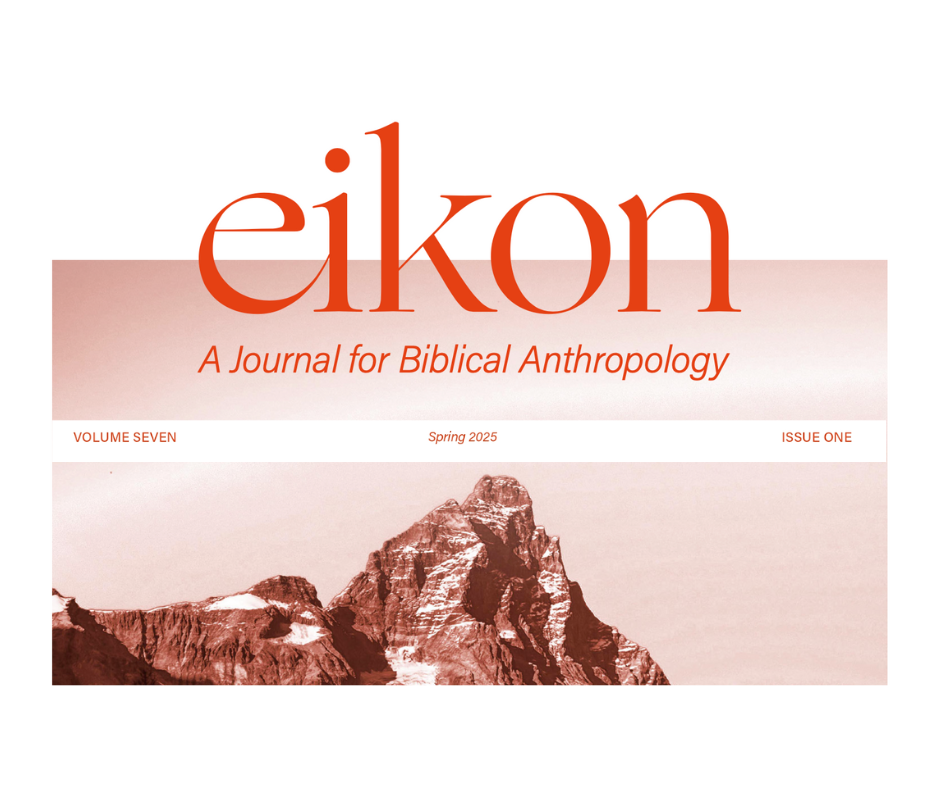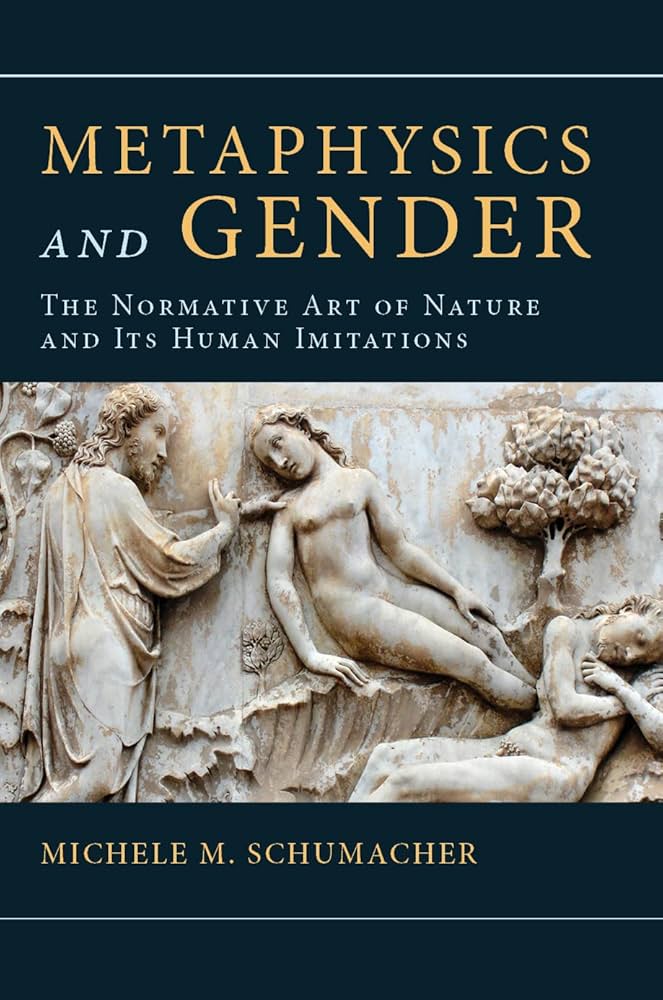Book Review: “Metaphysics and Gender: The Normative Art of Nature and Its Human Limitations”
By: Drew Sparks

Editor’s Note: The following review appears in the Spring 2025 issue of Eikon.
Michele Schumacher. Metaphysics and Gender: The Normative Art of Nature and Its Human Limitations. Steubenville, OH: Emmaus Academic, 2023.
In Metaphysics and Gender: The Normative Art of Nature and Its Human Limitations, Michele Schumacher provides readers with theological and philosophical tools for evaluating and engaging the current discussion surrounding gender and the attendant philosophies that reject the nature-art paradigm found in the classical philosophical tradition most clearly embodied in the writings of Aristotle and Aquinas. In what follows, I offer a summary of her work, a brief analysis, and three ways her writing can benefit Protestant ethics.
Summary
In chapter one, Schumacher begins by outlining the present state of medical practices and the altering of human sex. She examines the widely known cases of Bruce Jenner and Bruce Reimer. Jenner altered his body after a successful career as a male athlete, and Reimer was raised as a girl after a botched circumcision that led to a sex-reassignment surgery before the age of two. Schumacher also assesses the medical industry by depending upon the work of Paul R. McHugh, former psychiatrist-in-chief at Johns Hopkins who helped put an end to their practice of sex-reassignment surgery, as well as the gender care practices and studies of Boston Children’s Hospital and Massachusetts General Hospital. Schumacher helpfully outlines the problems with contemporary studies on gender care. She faults their methodology, narrow control group, and brief follow-up time (27). When one rightly accounts for these factors, as the study performed in 2011 by the Karolinska Institute in Sweden, one notes that patients who had surgeries suffer mental disorders approximately ten years after their surgeries and have a suicide rate “twenty times above that of the general (non-transgendered) population” (20).
If the first chapter outlines the current cultural phenomena of sex-reassignment, the second introduces readers to the theory of gender proposed by Judith Butler as an underlying philosophy that can explain the phenomena. Schumacher differentiates Butler’s position from Simone de Beauvoir, showing how the two differ on where construction begins. On the one hand, Beauvoir maintained that sex was natural and gender was constructed through performance. According to Beauvoir, one can become woman even if one is not naturally female. On the other hand, Butler moves construction back a step. Gender becomes a verb that gives rise to sexed nature. Here, we see the reversal of classic theology, which maintains that God’s eternal idea of all things is expressed in nature and man receives nature as impressed upon him. Instead, there is no God, and no nature that precedes the human idea of all things. No longer does God impress upon creation; rather, man impresses his ideas upon nature. In the end, sex is as fluid as gender.
Chapter three presents a different philosophical picture of reality. Instead of seeing nature as arising from within a sociological construct through gendering, as Butler maintains, Schumacher offers an Aristotelian-Thomistic (henceforth, A-T) account of nature and art, wherein nature is a given of reality that norms art. Schumacher uses the term “art” in the classical sense as that which is produced by a rational creature using matter from nature and respecting “nature’s own (i.e., intrinsic) orientation or purposefulness” through imitation (46). The telos or inclination of a given nature reveals the good which perfects it. Art respects this telos as that which is ruled and measured by nature. Butler effectively reverses this philosophy. There is no nature except that which arises within a social construct, meaning that nature is an artifact of man.
Having articulated the differences between Bulter and the A-T metaphysic, Schumacher examines the relationship between freedom and essence in chapter four. The A-T account insists that freedom follows from essence and is for the good that completes or perfects our nature. Existentialist philosopher Jean-Paul Sartre sees this view of freedom as bondage since our essence determines what is good for us, which is a form of constraint. To be free, our freedom must precede our essence so that we can consciously choose what we are. Our desires are chosen by us, not given in nature. However, Sartre quickly encounters a problem, for we are not alone. Others also choose their freedom and, in order to respect this freedom, we must be willing to be manipulated by others as those who also manipulate. The sexual act most explicitly demonstrates this reality as one either makes the other an object or is made an object for the other. One is either the sadist or the masochist. This leads Schumacher to “second wave” trans-theorist Andrea Long Chu (75). Chu argues that gender is not a social construct that arises from our desires, contra first wave theorists. Instead, gender is given to us, not in nature, but in the desire of others such that we receive gender as those who seek to be desired. We all long to be desired, thus we are all miserable females, for to be female is to be miserable as one seeks to meet the desire of those who have chosen for us. Freedom is lost.
Chapter five weds the nature-art paradigm and its reversal in the “trans-ing of human biology” (106). Schumacher asserts that IVF began as an attempt to preserve biological parenting but has, in fact, continued to undermine the normative process of begetting children in favor of making them by producing offspring through art rather than receiving them in nature. Bodies and their function are no longer required, allegedly, because art can produce what was once only available through nature, especially for those who have “transformed” their nature by means of art. Schumacher paints a bleak picture of reality and its trajectory as she discusses uterus transplants for men who identify as trans women, pregnant women who give birth as legal fathers, three-parent embryos, uniparents, and compulsory screenings required by insurance companies as one determines which embryos to implant.
The final chapter further presents the consequences of inverting the nature-art paradigm. Schumacher begins with the speculative intellect upon which reality is impressed or informed and the practical intellect by which one impresses form upon matter, making art. Butler reverses the theoretical and practical intellect because everything is about doing or gendering as one constructs reality. Butler follows Sartre here. Essence is chosen. However, Schumacher notes that Sartre’s view of freedom renders one either the sadist or the masochist, and this is where Chu and the problem of language emerge. One cannot merely create their own essence by an act of freedom, for the essence created must be received and confirmed by the intellect and language of others in order to receive validation and confirmation of change. Society must give gender to you. Here again, we are all passive recipients acted upon by society, which places all of us in the existential position of female because we must be recognized as the object of another’s consciousness. This is why silence is violence. Schumacher offers a brief conclusion at the end of her work with a plea to respect the nature-art paradigm given by God.
Brief Analysis
Schumacher is to be applauded for writing a very clear, albeit dense, work that clearly articulates the theology and philosophy of the nature-art paradigm and the consequences of rejecting it as found in the work of Sartre, Beauvoir, and Butler. She traces philosophical ideas, provides a robust counter proposal rooted in an A-T metaphysic, engages medical and sociological studies, and includes several examples from popular culture. I heartily recommend this work to students of philosophy and theology with an interest in contemporary debates surrounding gender.
The Benefit of Schumacher’s Work
There are three particular ways I believe Schumacher’s work can benefit Protestant ethics for the better. First, Schumacher operates within the confines of the natural law tradition, and this forces readers to question the validity of her approach. I, for one, share great affinity for this tradition and am grateful for the work of David VanDrunen, Andrew Walker, and David Haines and Andrew Fulford who have recently helped revive natural law in Protestant circles.[1] Although differences exist among these thinkers, I am hopeful that further conversation about these matters will benefit Protestants. Schumacher’s work is an example of how one sympathetic to the natural law tradition could employ her argumentation or at least reason with the philosophical and theological foundation from which she builds.
Second, Schumacher helps us rightly think about teleology and inclination. When we speak of teleology or purpose and inclination, we usually refer to the intentions of our mind, but Schumacher shows us that inclination precedes mind and is rooted in human nature. Human nature is oriented toward the true and the good in body and soul prior to any determination of the intellect. The purposes of the mind are normed by the inclinations of our nature. Although one might feel inclined or oriented to a particular sex or gender, these inclinations are normed by the human nature and cannot be reduced to the choice of the individual or the community. The teleology of human nature ought to be measured in the same way that triangles, squirrels, and trees are measured. First, we discern what the essence in question is. Then, understand how this particular instantiation of a nature ought to be and discern the ends that complete it. For rational creatures, such as humans, the ends that perfect our nature ought to be pursued in the same way that a non-rational squirrel ought to bury and find nuts. Our nature, as well as the squirrel’s, is given to us and by it we are oriented toward the true and the good. As Schumacher reminds us throughout her work, we act from our nature to produce art, and both our nature and the art produced are measured and ruled by the eternal law of God.
Third, Schumacher offers a helpful way to think about creaturely freedom. God endows creatures with natures that are oriented toward particular and fitting ends. This enhances, rather than restricts, freedom. Schumacher traces how this idea is lost in the thought of Sartre who argues that choice precedes essence, in Butler who maintains that sex and gender arise within a social construct by determination, and in Chu who laments the lack of freedom as we become the object of the other’s consciousness and desires. Instead of assuming that our nature constricts our freedom, Schumacher argues freedom is for the good. Our natural inclinations foster true freedom as they guide us to the ends that complete us. When humans determine to become the sole arbiters of freedom by inverting the nature-art paradigm, they either end up competing for freedom in a zero-sum game, as Sartre suggests when he asserts that we are either the sadist or the masochist, or we despair like Chu because all freedom is lost.
Conclusion
Schumacher elegantly paints a picture of reality wherein God is the maker and measurer of all things as revealed in the nature-art paradigm. God impresses reality unto mankind and orders all life toward the good. When man rejects this paradigm and asserts that no nature exists except what we make of it, everything becomes art and nothing is stable. Man takes the place of God and seeks to express his identity upon fellow man. Freedom is compromised and despair follows. There is a better way. We ought to choose in accord with our given nature and pursue that to which our nature is inclined as we are measured by the One who made us.
[1] David VanDrunen, Natural Law: A Short Companion (Brentwood TN: B&H Academic, 2023). Andrew Walker, Faithful Reason: Natural Law Ethics for God’s Glory and Our Good (Brentwood, TN: B&H Academic, 2024). Haines, Haines and Andrew Fulford. Natural Law: A Brief Introduction and Biblical Defense (Moscow, ID: Davenant Institute, 2017).
